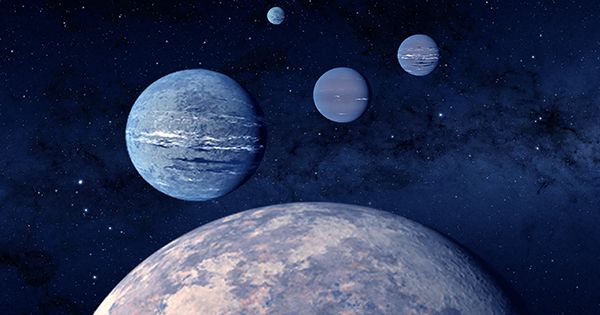International researchers have made incredibly detailed observations about the environment of exoplanet HD 209458b. HD 209458B, located 159 light-years from Earth, is a planet of fire. It was the first planet to be discovered in a transit system in 1999 (where an inverted star illuminated by a star signals to move forward, blocking light now) 1999.
It is the first extroverted planet to detect its atmosphere as well as measure many of its physical features. Now, astronomers have added something more. With the details of their search in the journal Nature, this is the first time an exoplanet has detected six chemical elements in its atmosphere. The team detected hydrogen cyanide, methane, ammonia, acetylene, carbon monoxide and water vapor. This “chemical fingerprint” was crucial for the study, suggesting a planet that was born far away from its star, HD 209458b.

The planet has too much carbon just 7 million kilometers (4,350 million miles) away from it. This essay will be able to explain if it made more. In our solar system, this exoplanet formed around Jupiter’s orbit (750 million kilometers / 470 million miles). Dr Siddharth Gandhi of the University Of Warwick Department Of Physics explained in a statement, “The main chemicals are carbon-carrying and nitrogen-carrying species. If these species are at the level of their identification, it is an indicator of an atmosphere richer in carbon than oxygen. We first used these six chemical species to narrow down where their protoplanetary disks formed.
“There is no way that if a planet were in the line of concentration of water vapor, it would form an atmosphere rich in condensation at very hot temperatures (1,500 K). Should and should mostly be bound to hydrogen in water formation or carbon monoxide formation. Our completely different findings agree with the current understanding that hot Jupiters like the HD 209458b form far beyond their current position.” HD 209458B is the first exoplanet where water vapor was discovered. In fact, the signal is so clear and strong in infrared light that it is difficult to see other chemicals, so the team had to work hard to refine their techniques using the Galileo telescoping Galileo in the Canary Islands.
“If this discovery were a novel, it would have started with ‘In the beginning there was only water …’ because the amount of exploration from near-infrared observations on the exoplanet atmosphere was largely based on the presence (or absence) of water vapor, which Dominates this region of the spectrum, ”explained Dr. Paolo Giacobbe, lead author of the Turin Astrophysical Observatory. “We asked ourselves, do not all the other species expected from the theory have any measurable mark? Our efforts to improve analysis techniques have opened up new horizons for research by discovering whether these can identify.”
















